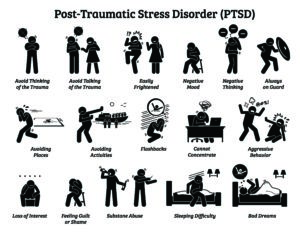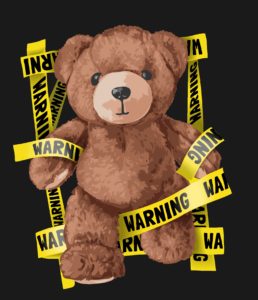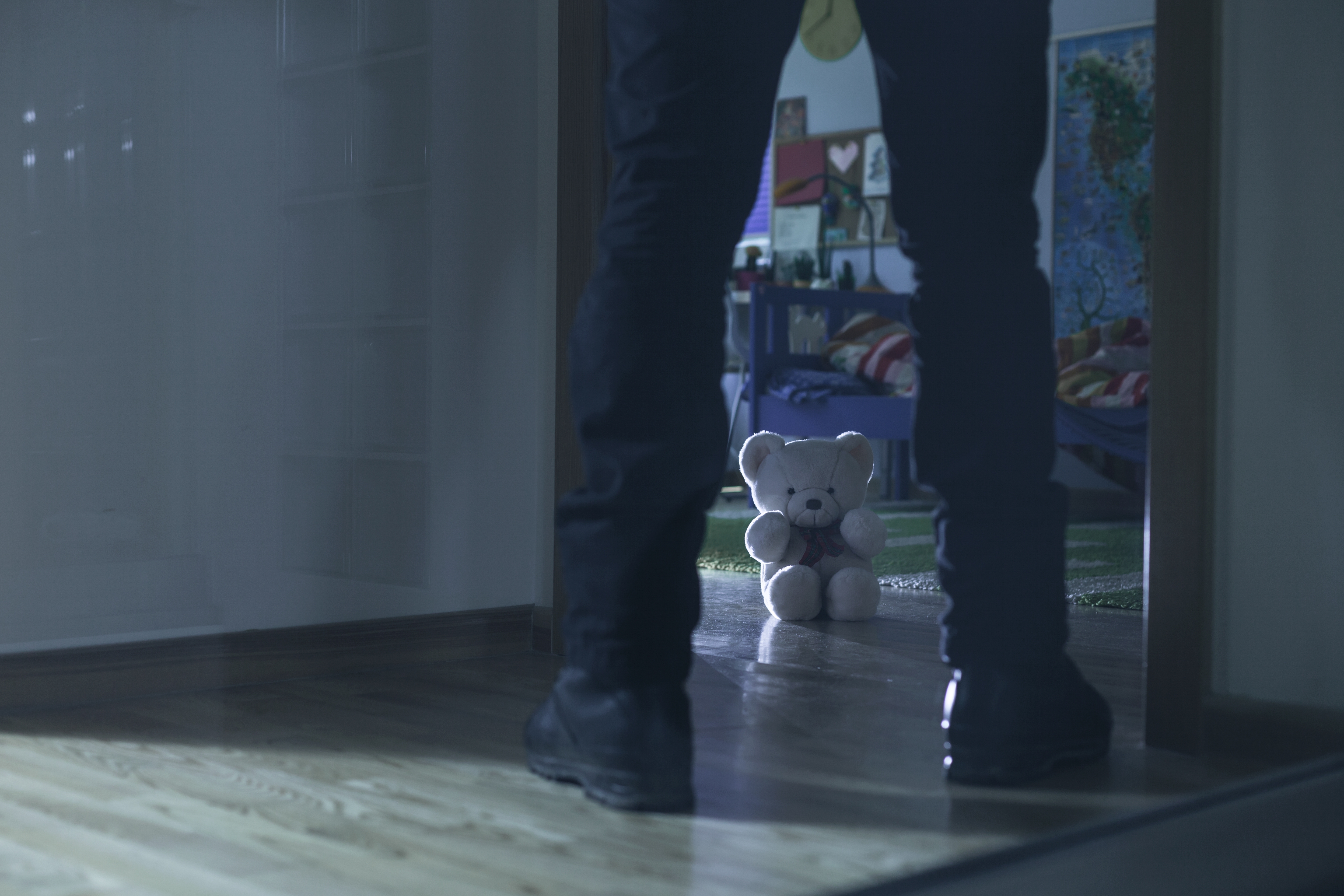How Adverse Childhood Experiences Relate to Criminal Behavior: Part 3
The definition of child sexual abuse has been controversial. Some scholars, practitioners, and organizations believe that peer-perpetrated abuse should be included in the definition and others believe that the definition should be limited to interactions between children and adults. Therefore, the research includes two separate sets of data with regards to prevalence rate, one that includes peer-perpetrated abuse and one that does not. Townsend, Rheingold, and Haviland (2016) prepared an updated review of child sexual abuse prevalence which revealed the following statistics:

There is also controversy regarding the fact that some practitioners believe there is a non-contact component that should be included when determining prevalence rates; however, most practitioners chose to study only cases of contact abuse. Therefore, this study only includes contact abuse as the definition of non-contact abuse can be inconsistent. The ideal study subjects were between 17-18 years of age because they have completed childhood. The studies done over the years have even varied regarding the types of sexual abuse. Some have studied only forcible intercourse or attempted intercourse by an adult, while others collected data on a wide range of non-contact sexual acts, such as flashing and pornography.
Another issue when determining the prevalence rate is the difference in methodology of data collection. Some chose child self-reporting and other chose adult self-reporting. Unfortunately, most adult self-reporting studies focus on abuse from past generations when the prevalence rates were different and therefore are not useful in determining a current prevalence rate. Child self-reporting studies are considered more relevant as they document abuse occurring 0-17 years prior to the study date. The study I am reviewing reviewed meta-data from 16 studies dating from 1948 to 2014. 13 studies were excluded because they did not meet the final criteria. This study included three studies that met the final criteria was as follows:
1) The study collected data on aggregate of adult, older youth, and peer-perpetrated abuse, or an aggregate of adult and older youth-perpetuated abuse.
2) The study collected data on abusive acts occurring to children 0-17 years of age. Study subjects were 17-18 years old and born after 1982.
3) The study collected data from both genders.
4) Only contact abuse data was included in the study’s prevalence rate.
(Townsend, Rheingold, & Haviland, 2016)

The consequences of child sexual abuse are many and include immediate psychological consequences such as shock, fear, anxiety, nervousness, guilt, post-traumatic stress disorder symptoms, denial, confusion, withdrawal, isolation, and grief. These consequences of course vary from child to child depending on severity, proactive coping mechanisms, and/or a delayed reaction to the trauma. Children frequently exhibit the following consequences of sexual abuse: neurobiological changes, developmental delays, anger,

aggression, depression, anxiety, fear, distrust, maladjustment, social isolation behavior, somatic problems, dissociative symptoms, behavior problems, low self-esteem, sexual behavior problems, and/or low self-esteem. Adolescents exhibit the same consequences with the addition of self-mutilation, self-destructive behavior, poor body image, suicidal thoughts or attempts, eating disorders, strained family relationships, delinquency, homelessness, alcohol/drug use, gang involvement, high-risk sexual behavior, teen pregnancy, early sexual initiation, sexually transmitted diseases, multiple sexual partners, lack of emotional commitment in romantic relationships, sexual revictimization, criminal offenses, and/or dating victimization and abuse.
There are multiple factors that influence whether or not there will be adverse outcomes in sexually abused children. Many believe that parental support is the most important factor in helping children adjust following an abuse situation, regardless of the severity of the abuse. However, outcomes are determined by the characteristics of the abuse event, the personal character of the victim, the character of the family, and the sources of support. The possible effects of childhood sexual abuse that can be exhibited well into adulthood are many and include issues with sexual and physical health, psychological problems, relational and marital issues, parental issues, and issues during the perinatal period of pregnancy. We won’t delve into the 37 detailed issues but many of those can lead to criminal behavior.

(Institute National de Sante Publique Quebec, 2022)
According to the CDC, “91% of child sexual abuse is perpetrated by someone the child or the child’s family knows, and as of 2015 the cost of child sexual abuse was estimated to be at least $9.3 billion.” (CDC, 2022)
 A study done in 2018 noted that child sex abuse victims are more likely to commit general or violent crimes than non-abused people, however, there wasn’t enough evidence to confirm or refute this link because many other factors influence whether or not these victims will commit crimes. (Papalia, Luebbers, & Ogloff, 2018). An earlier study by (Papalia, Ogloff, Cutajar, & Mullen, 2018) in Australia covered a sample of 2,759 documented cases of sexual abuse and 2,677 community controls that were linked to police records and mental health service databases and found that: 1) victims of childhood sexual abuse were more likely than the controls to engage in all types of criminal behaviors, 2) women had a stronger association for general and violent offending, 3) males had a stronger association with sexual offending, 4) certain characteristics of the sexual abuse such as the age of the child, the number of perpetrators, the relationship to the perpetrator, and the development of mental health problems were all associated with the increased likelihood of criminal behavior, and 5) victims who did engage in criminal activity were more likely to have cumulative risk factors that victims who did not engage in criminal activity.
A study done in 2018 noted that child sex abuse victims are more likely to commit general or violent crimes than non-abused people, however, there wasn’t enough evidence to confirm or refute this link because many other factors influence whether or not these victims will commit crimes. (Papalia, Luebbers, & Ogloff, 2018). An earlier study by (Papalia, Ogloff, Cutajar, & Mullen, 2018) in Australia covered a sample of 2,759 documented cases of sexual abuse and 2,677 community controls that were linked to police records and mental health service databases and found that: 1) victims of childhood sexual abuse were more likely than the controls to engage in all types of criminal behaviors, 2) women had a stronger association for general and violent offending, 3) males had a stronger association with sexual offending, 4) certain characteristics of the sexual abuse such as the age of the child, the number of perpetrators, the relationship to the perpetrator, and the development of mental health problems were all associated with the increased likelihood of criminal behavior, and 5) victims who did engage in criminal activity were more likely to have cumulative risk factors that victims who did not engage in criminal activity.
So, can childhood sexual abuse be used as a defense? There have been efforts by some criminal defense attorneys to say that their client was not responsible for their crime because they could not tell right from wrong because of abuse by their spouses or parents. This defense has not been used successfully in criminal law because it is not specifically recognized as a defense. However, it has been used successfully as an insanity defense because prior sexual or other physical abuse can lead to various mental disorders such as post-traumatic stress disorder and battered women syndrome. Harvard Law Professor Alan Dershowitz wrote at book in 1994, The Abuse Excuse, and in it stated that the excuse failed to distinguish between the reasons for committing the crime and the responsibility for committing the crime. The Menendez brothers attempted to use this defense in 1993 and the first trial ended in a hung jury. The second trial in 1995 convicted them of first-degree murder of their parents. However, Lorena Bobbitt was found not guilty by using the insanity defense in 1994. (Law Library, 2021)
Works Cited
CDC. (2022). Preventing Child Sexual Abuse. Retrieved from Centers for Disease Control and Prevention: https://www.cdc.gov/violenceprevention/childsexualabuse/fastfact.html
Institute National de Sante Publique Quebec. (2022). Media Kit on Sexual Assault. Retrieved from Institute national de sante publique: https://www.inspq.qc.ca/en/sexual-assault/understanding-sexual-assault/consequences
Law Library. (2021). Retrieved from Law Library – American Law and Legal Information: https://law.jrank.org/pages/3932/Abuse-Excuse.html
Papalia, N., Luebbers, S., & Ogloff, J. (2018, Nov-Dec). Child sexual abuse and the propensity to engage in criminal behavior: A critical review and examination of moderating factors. Aggression and Violent Behavior, 43, 71-89. doi:https://doi.org/10.1016/j.avb.2018.10.007
Papalia, N., Ogloff, J., Cutajar, M., & Mullen, P. E. (2018, July 8). Child Sexual Abuse and Criminal Offending: Gender-Specific Effects and the Role of Abuse Characteristics and Other Aderse Outcomes. Child Maltreatment, 23(4), 399-416. doi:https://doi.org/10.1177%2F1077559518785779
Townsend, C., Rheingold, A. A., & Haviland, M. L. (2016, March). Estimating a Child Sexual Abuse Prevalence Rate for Practitioners: An Updated Review of Child Sexual Abuse Prevalence Studies. Retrieved from Darkness to Light: End Child Sexual Abuse: https://www.d2l.org/wp-content/uploads/2020/01/Updated-Prevalence-White-Paper-1-25-2016_2020.pdf
Don’t miss our newsletter! Topics covered are:
Assault / Trauma
DUI / General Medical
Child & Elder Abuse / Neglect
Mental Health / Toxicology
Sign up here.










